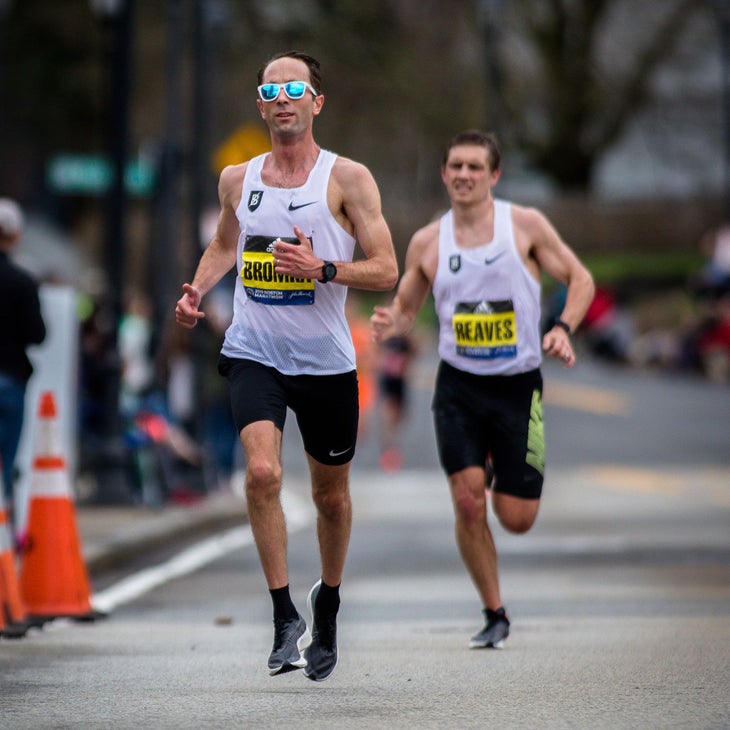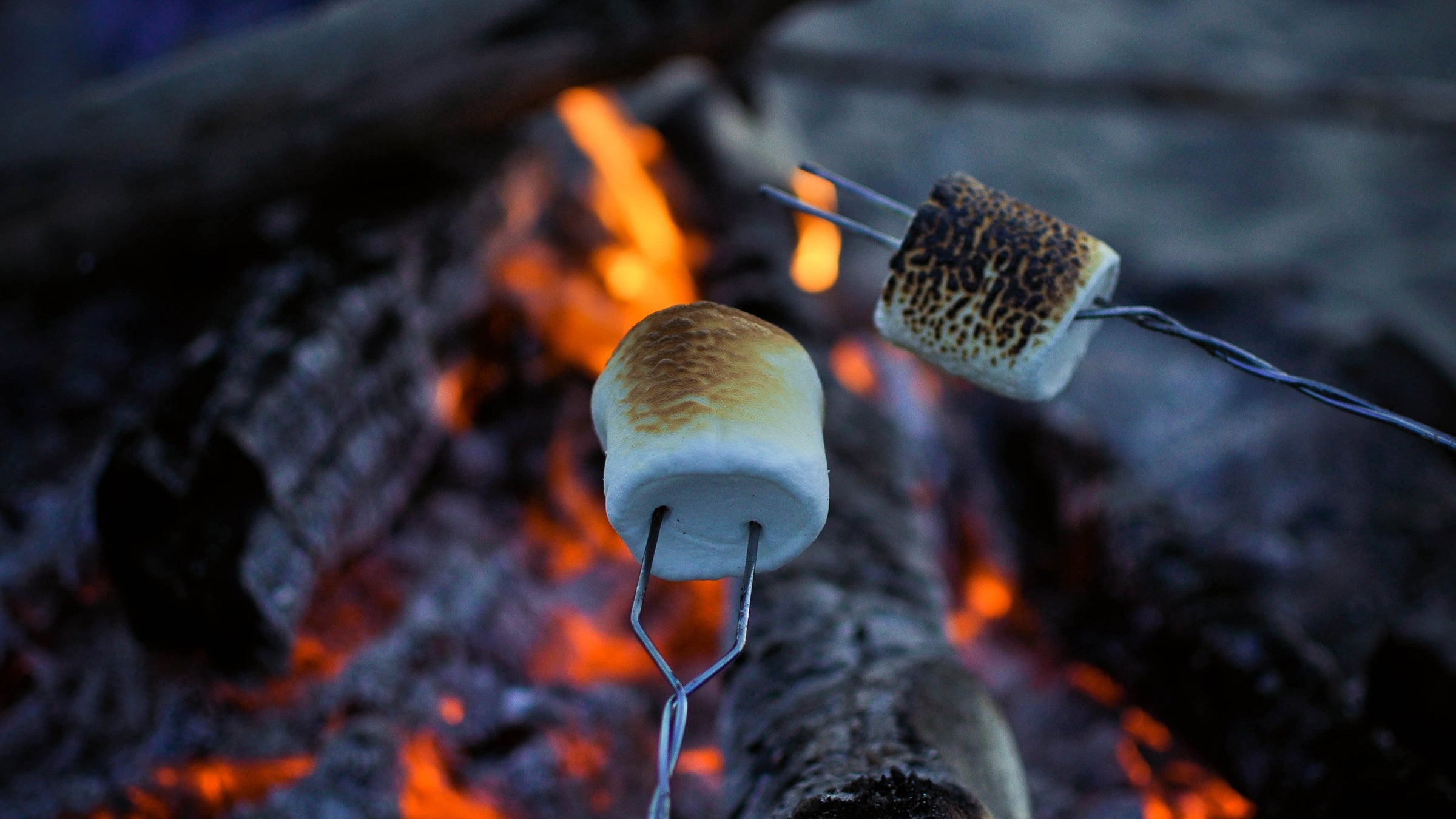“Careful, you don’t want to burn it.” I cautioned my son this summer as he held a marshmallow precariously on the end of a freshly whittled stick.
“That’s it, hold it close, you need to hold it in the heat of the flame without getting so close that it catches fire.”
I attempted to find the words to describe the ranges of a flame, but knew full well that he’d only really learn through experience. You’ve gotta burn some marshmallows before you really understand how to roast them.
Later, I realized that I could have been explaining how to race the Boston Marathon.
As I enter my seventh running of the historic race and my first as a “Masters” athlete, I’ve realized that I love the event not just because of its age and energy, but precisely because of its fickle complexity.
“I felt so good early on!” Friends often exclaim, pausing with wonder and disappointment about how the home run race they felt was within reach early on slipped through their fingers by the time they were slogging down Comm Ave.
I get it, those first five miles tempt your imagination. Afforded generous downhill breaths of extra oxygen, you lure your quads toward the edge, balancing between execution and breakdown. Navigating the Framingham-Newton-Boston rollercoaster feels like attempting to stand atop a sea vessel rolling in the ocean’s swell. You’re never quite settled. It’s a good thing they make you earn entry to this special race with prior marathon experience, because it demands a keen ability to sense yourself.
The beauty of Boston is this fickle balance between opportunity and jeopardy. The downhill course can be fast, but it often leaves experienced racers sputtering along the edges of sun-soaked Boston streets, perplexed as they aim to explain where it went wrong — so many months of preparation expended in a few short hours of aspiration, then forced to wait an entire calendar year to try again.
“I thought I was holding back, I guess the heat got to me.” A friend suggested one Patriot’s Day afternoon while slumped over in his chair, sipping an IPA to dull the muscle pain and racer’s frustration.
***
“I don’t want it like that!” My son shouted at the charred confectionery treat.
He’d fried one good. Pitch black. I assured him it was alright, not to be upset.
“It’s okay, you don’t need to eat that one, we’ll try again.”
He sulked in disappointment, unsure of himself and unclear whether he could actually do the thing the adults had made look easy.
“Can…you make me one? He pleaded, hoping to skip the step of mysteriously dancing a pristine white ball of sugar atop an open flame.
“No. The making is what makes smores great. Come on, I’ll help you on this one.” I coaxed him back toward the flame.
He aimed his marshmallow downward, reluctantly, at a distance where it might warm, but not roast. I stared at his intense expression and imagined his mind swirling to make sense of the gradations of heat intensity intermingled in front of him. He would learn by experience how the oranges, reds, and blues offered different levels of heat, and the need to keep rotating his stick. He would have to learn to balance the space between roasting and toasting himself.
“I’m planning on a slight positive split, accounting for the ease of the early miles and giving some back through Newton,” an experienced Boston runner explained to me years ago before the April event. He knew that while the weather might be unpredictable, the hills have been there for eons. They’re tricky, but can be understood. They’re difficult to decode, but far from impossible.
The first couple times I raced Boston I was so overwhelmed by just covering the distance that I didn’t worry much about mastering its historic undulations. A recent collegiate cross country running grad, I figured I knew strength and toughness. As it happened, the marathon glanced at my few true long runs like an usher reviewing a cheap ticket; it refused my entry to a strong finish, pointing me backward in disappointment.
As I’ve returned year after year I’ve gained a sense of how to hold myself “near the fire” without overreaching in a way that risks burning up and stumbling home. I’ve come to learn that, while it’s alright to singe yourself slightly through Framingham and Natick, it’s important not to push beyond your instinctual limit too early since you can’t unburn your legs once they’re scorched. Backing off after you’re fried doesn’t do much good.
“Prepare to feel like shit, everyone feels like shit, it’s what you can do while feeling horrible that defines your finish,” I reminded a friend a few years ago of a truth he already knew. The impact of crashing your quads downhill for hours rarely leaves you feeling excellent by halfway.
But there’s a difference between slipping back a handful of seconds per mile towards the end, and slowing by full minutes. In college, my track team used to stand near the peak of Heartbreak and wonder at why these seemingly experienced racers were walking their way up the street in front of the shrill screams of Chestnut Hill fans. We were incredulous, our young egos unable to comprehend such embarrassment. We had no concept for how early ambition can result in later depletion in races lasting multiple hours.
***
Marshmallow by marshmallow my son learned how to yo-yo the sweet orb in and out of the danger, nearer and further from the flame’s intensity, much the same as racers must work together through the mercurial Massachusetts hills.
“I’ma take it easy for a bit,” my teammate Patrick mentioned to me a few years ago as we rose steadily up and over the highway 95 overpass.

“Sure, do your thing,” I handed back. This is running “together” on a perilous course. While the track, and flat road courses, call for teammates to race joined at the hip, Boston demands constantly assessing your personal space. A meter off the front or back of the pack, an easy quarter mile to settle your stomach before charging back after a good burp, seasoned racers learn how to lean into and away from the flame of exertion on their own timing. Like Patrick, who re-found his high gear after the peak in Framingham, and smoothly rolled back ahead of me that day.
“Take your time, you can always give it more heat.” I encouraged my son as the setting sunlight amplified the flickering shadows sharper across his face. Similarly, there are almost always more seconds to be scrounged from the final kilometers descending into downtown, if I’m patient enough to allow it.
This isn’t a plea for you to play it safe. Just as roasting your own campfire dessert isn’t the easiest, simplest, or safest evening treat, the fun of Boston is in the chance for mess and mishap. The beauty of Boston is dancing with the risk of failure, playing with the searing sense of your threshold.
Of course, this is where the metaphor breaks, since, unlike an easy replacement from a bulging sack of cheap supermarket treats, the eager racer risks much more, because they know another chance to dance this line is uncertain. I can encourage my son to play with the brink of that heat while also staying patient, but a runner with a Boston bib on their chest knows full well what it took to arrive healthy in Hopkinton that morning, and how many of life’s curves could prevent it from happening again. Racers gamble, surge, and over-ride their instincts because they understand that another chance like today is far from certain.
Yet, I’ve returned to race in the Bay State repeatedly because I love its madness. I embrace its chaos. Even finding comfort when it’s too hot or too humid. The hills, too steep, clear my mind of the incessant expectation of perfect splits, freeing me to race.
Just as the sign of a successful s’more is a messy, chocolate and marshmallow smeared chin, Boston lures with the hope of arriving into Copley Square with a devilish grin of accomplishment on an effort-creased, sweat-smeared face.
The annual invitation from eight local towns to the global endurance community is a challenge to take on as much as you think you can handle — and then risk just a bit more.
Like the intoxicating sweetness of a s’more that is never meant to be balanced or reasonable, I try to remember in those final miles — when my quads are shrieking and my vision is blurred and I’m screaming, “I HAVE HAD ENOUGH!” — that this madness isn’t a problem, it’s the point.
Only then it’s time for a bit more…
Turning right through the gutter onto Hereford you begin to hear it, and then leaning left around the fenced-in fans you finally see it: 600 meters of remaining excess and jamboree down Boylston. Sprinting furiously, squinting, then pleading for the finish line, the fans’ calls ricochet in expectation, injecting inspiration like an accelerant sugar high of chocolate, marshmallow and graham cracker.
Now is the time to embrace the pure excess.
In the end, whether I’m crouched against a bank building to recover in exhaustion, or shuffling along The Common to celebrate with a friend, a moment of peace always washes over me as I realize, “Wow, that was fun.”
—


